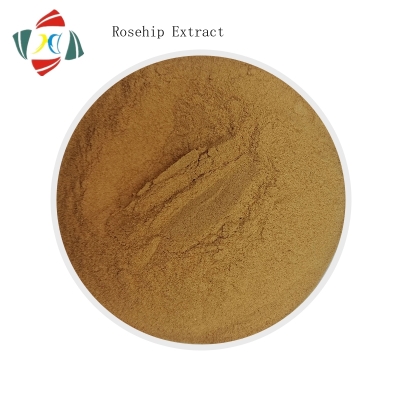1 case of disclueluspus and reflexive co-concentration microscope observation of children's facial limited plate lupus
-
Last Update: 2020-05-29
-
Source: Internet
-
Author: User
Search more information of high quality chemicals, good prices and reliable suppliers, visit
www.echemi.com
1clinicaldatathe child male, 10 years old, mainly due to "red plaque on the left cheek for 2 months" on January 20, 2016 in our clinicPatients 2 months ago without obvious triggers left cheek appeared 2 small red patches, slightly raised skin, no obvious itching and other conscious symptoms, see figure 1Zengdiagnosedas "papules urticaria", the external drug cream (the type unknown), no significant improvementThe child has been in good health, the general condition since the ongoing disease is good, no obvious fever, and photosensitivity phenomenon, denied the history of mosquito bites and trauma history, no connective tissue disease and similar medical history in the familyDenial of a history of systemic diseasesPhysical examination: the system examination did not see obvious abnormalities, neck lymph nodes were not touchedDermatology examination: left cheek can be seen 2 isolated red patches, there is a sense of immersion, the boundary is not clearLaboratory examination: blood urine routine and CRP normal, serum ESR, ANA, RNP, anti-Sm, antidsDNA, SSA, SSB, complement C3, complement C4 normal, anti-chain "O" 586 IU/mL (0 to 150 IU/mL)Psychic tissue pathology examination: under the mirror can see the layer mild angular excess, epidermal atrophy thinning, hair follicles, hair follicles and epidermal base cells visible vasomorphic degeneration, dermal thorade color incontinence, dermalblood vesselsand appendages around the phage pigment cells and dense lymphocytes immersion, see Figure 2 immune group dyeing: CD3 ( , CD20, S), CD68 ( , CD23 ( -), CD1a small amount ( s) Reflex-type confocal microscope (RCM) examination: epidermis thinning, visible hair follicle keratin, substrate cell liquefaction degeneration, dermal blood vessel and appendages surrounding phagocytosis cells and dense lymphocytes immersion, see Figure 3 to 6 According to the results of clinical and histopathological examination of , the diagnosis is: children limited disc-like lupus 2 discussion discery lupuseryerymatosus (Discoid lupus eryhematosus, DLE) is the lightest subtype in the lupus lupus spectrum, and the Gilliam classification divides chronic skin-type lupus into limited DLE and pantonous DLE Limitation DLE, good in the exposed area, especially the head face, mostly represented in a single or several round or irregular patches of red, the surface can be covered with sticky scales, the surface can have capillary dilation With the development of disease skin damage can develop into a typical disc-shaped erythema, the performance of slightly bulging edges, central mild atrophy depression, can appear pigment decline Research esthest shown by Yuan Xinghai and others shows that although DLE has specific clinical manifestations, the diagnostic compliance rate is only 74.39%, and there are often misdiagnosers due to skin damage atypical children's DLE is clinically rare, with less than 2% of children under 10 years of age, about 7% of children under 16 years of age, and children with faster changes in rashes than adults, so diagnosis is more difficult In the clinical treatment process, DLE and skin lymphocyte leaching, skin lymphoma , polymorphic sun rash, flat moss and so on have many common characteristics to be identified In histopathological, the common point of the above-mentioned disease is the leaching of large inflammatory cells visible in the dermis, mainly lymphatic cells The main identification points of each disease are changes in epidermal structure: skin lymphocytic tumors and skin lymphocytic leachate epidermis are generally normal , polymorphic sunrash epidermis can be dermatitis-like changes, accompanied by dermal shallow seil significant edema, flat moss and DLE have base cell liquefaction degeneration, in which flat moss visible granules are wedged, DLE epidermal shrinkage DLE is commonly found in exposed areas such as face, histology examination is invasive, in the diagnosis of childhood diseases, the examination method is low acceptance RCM as a non-invasive examination in recent years, many scholars at home and abroad to explore its application in DLE diagnosis Koller et al reported that RCM sensitivity and specificity in DLE diagnosis were 62.96% and 94.53%, respectively In this case, RCM can observe the characteristics of hair follicles keratizing, substrate cell liquefaction degeneration, large number of rheumatal phages in the dermis and dense lymphocytes leaching, which correspondtos to the pathological examination Wassef, etc., can observe the interface changes of the dermis, the typical therapeutic manifestations of DLE such as vasodysis and pigment incontinence through RCM, and the RCM results observed in this paper are consistent with the results described in the report Ardigo, etc., suggests that the exact lesions can be selected through the RCM examination to improve the accuracy of the biopsy In summary, the pen believes that RCM in the diagnosis of children's limited disc lupus has a certain guiding value, but at present the number of observations is small, data limited, and strive for further accumulation of information, improve rcM examination in DLE diagnosis diagnosis of the diagnostic basis, and strive to RCM as a preliminary diagnosis of DLE screening method, thereby reducing the rate of missed diagnosis, improve the accuracy of pathological examination references
This article is an English version of an article which is originally in the Chinese language on echemi.com and is provided for information purposes only.
This website makes no representation or warranty of any kind, either expressed or implied, as to the accuracy, completeness ownership or reliability of
the article or any translations thereof. If you have any concerns or complaints relating to the article, please send an email, providing a detailed
description of the concern or complaint, to
service@echemi.com. A staff member will contact you within 5 working days. Once verified, infringing content
will be removed immediately.







